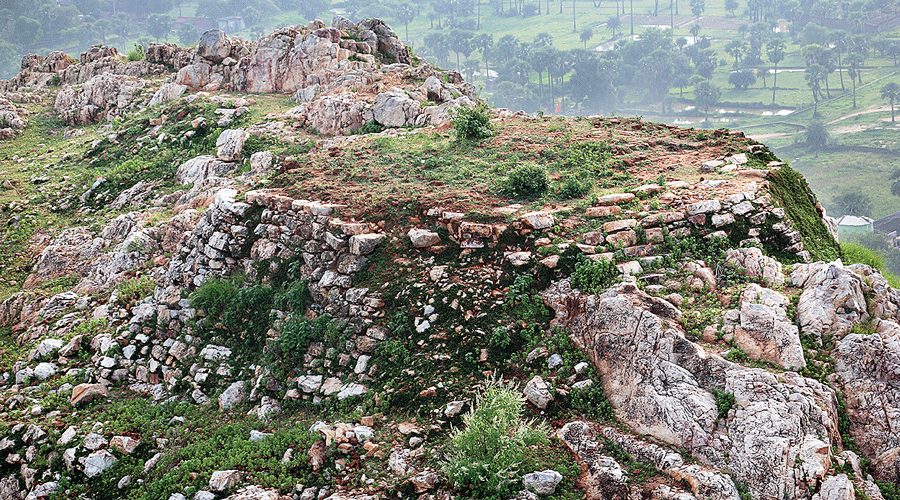A team of scholars from the Bihar Heritage Development Society (BHDS) and the UK-based Cardiff University is painstakingly retracing the footsteps of the ancient Chinese Buddhist monk-cum-traveller Xuanzang, also known as Hiuen Tsang, to discover archaeological remains and antiquities in the state.
The BHDS is a wing of the state art, culture and youth department.
They have found several archaeological sites, sculptures and structures in south Bihar and are now hoping to replicate the success in northern parts as part of the project ‘Archaeology on the footsteps of the Chinese traveller Xuanzang’, who visited India in the early seventh century AD.
Prominent among the discoveries are a Buddhist stupa atop the Dungeshwari Hill in Gaya, sculptures and structures in Jehanabad, Nawada, Nalanda and Patna districts.
BHDS executive director Bijoy Kumar Choudhary told The Telegraph that Xuanzang’s travelogue was very important from the point of view of the archaeological remains in Bihar and the country because he had referred to distances, directions and descriptions of several sites he visited between 630 AD and 642 AD.
English translations of Xuanzang’s travelogue began to come out in the 1840s and they were among the sources that helped British army engineer Alexander Cunningham identify ancient Nalanda, Vaishali, Shravasti, Kaushambi, Taxila and other archaeological sites across the Indian subcontinent in the 1860s and 1870s. Cunningham was the founder director-general of the Archaeological Survey of India (ASI).
“The translations of Xuanzang’s travelogue have many inaccuracies and discrepancies. However professor Max Deeg of Cardiff University, an eminent expert on Buddhist history and the spread of Buddhism from India to other parts of Asia, who also has a profound knowledge of the Chinese, Japanese and Sanskrit languages came up with an authentic translation of the travelogue. We collaborated with him to trace the footsteps of the ancient Chinese pilgrim and discover the ancient sites in our own Bihar,” Choudhary said.
Apart from Choudhary and Deeg, Abhishek Singh Amar, associate professor of Asian Studies at the Hamilton College in the US; Javed N. Malik, professor of earth sciences at IIT Kanpur and an expert on ground penetrating radar; M.B. Rajani from the National Institute of Advanced Studies and an expert on satellite imagery are other members of the team working on the Xuanzang project in Bihar.
Deeg’s expertise and accuracy on Xuanzang helped the team to discover a stupa on Panch Pahari (five hills or mounds) on the southwest side of Patna and a mound with a possible stupa under it on the southeast side near Patna Sahib. This matches with the area of ancient Pataliputra (Patna) as described by the Chinese traveller.
The project started in the third quarter of calendar year 2019 but came to a standstill in the pandemic. It took off again towards the end of 2021 and has been going on robustly.










